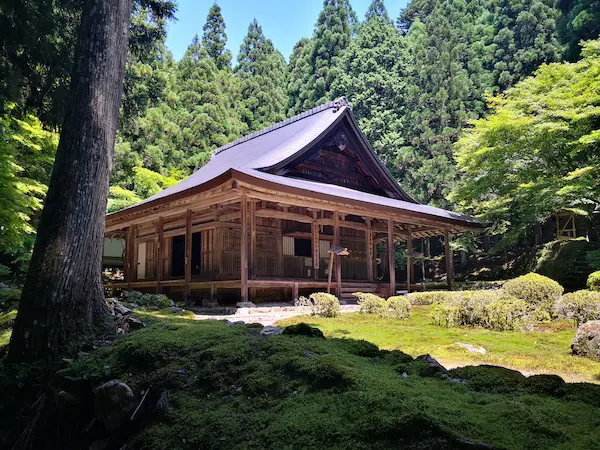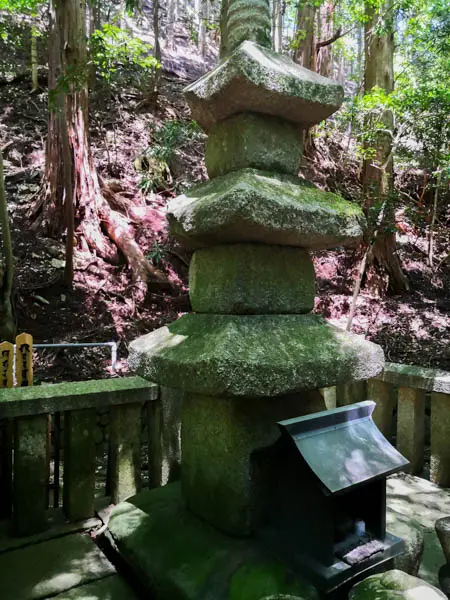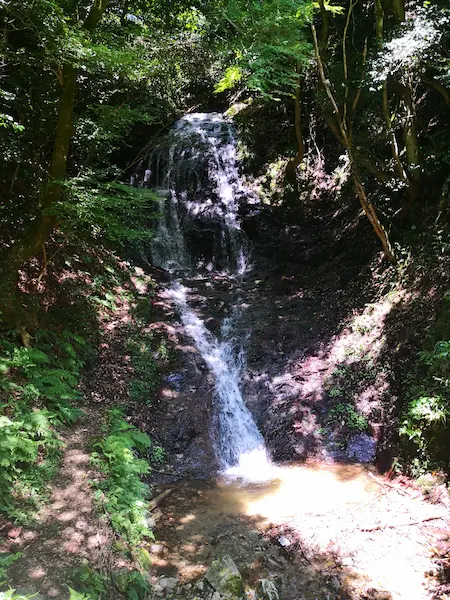Jikaku Daishi Ennin founded the Raigoin Temple in the early Heian period as a center for Tendai Shomyo (Tendai Buddhist chanting). In 1109, Ryonin rebuilt the temple. The reconstruction of the temple resulted in the establishment of the Lower Hall, with Shorinin as the main building, and the Upper Hall, with Raigoin as the main building. With these two temples, the entire area became known collectively as “Gyozan Oharaji” Temple. The shomyo (Buddhist chanting) that has been handed down in Ohara since then is called “Tendai shomyo” or “Gyozan shomyo”.
Fire destroyed the temple building repeatedly. The present building is the reconstruction in 1533.

In the main hall, three statues of Yakushi Nyorai, Amida Nyorai, and Shaka Nyorai greet visitors. All of these statues are outstanding works of art from the Fujiwara period and are important cultural properties. Though, you cannot take the photos of these statues.

Also located at the back of the temple grounds is a three-story stone pagoda, the grave of Seio Daishi, which is an important cultural property of the Kamakura period.

Otonashi-no-taki Waterfall
Otonashi Waterfall is located 300 meters upstream from Raigo-in Temple along the Ritsugawa River. It was named “Otonashi no Taki” (Soundless Waterfall) because the sound of the waterfall harmonized with the rhythm of the chanting of the priest Ryojinno during his practice of the Buddhist chanting. Although the waterfall has its origin, it is not a magnificent waterfall worth the trouble of visiting.

Model courses to visit Raigoin
Walking tour of Ohara is a good one-day program. You can visit temples in seclusion.
Related articles:
[…] is said to derive from Ohara-ji Temple (the collective name of Shorinin Temple and Raigoin Temple), which was founded by Ennin, a disciple of Saicho, in 835. Ohara is dotted with temples of the […]